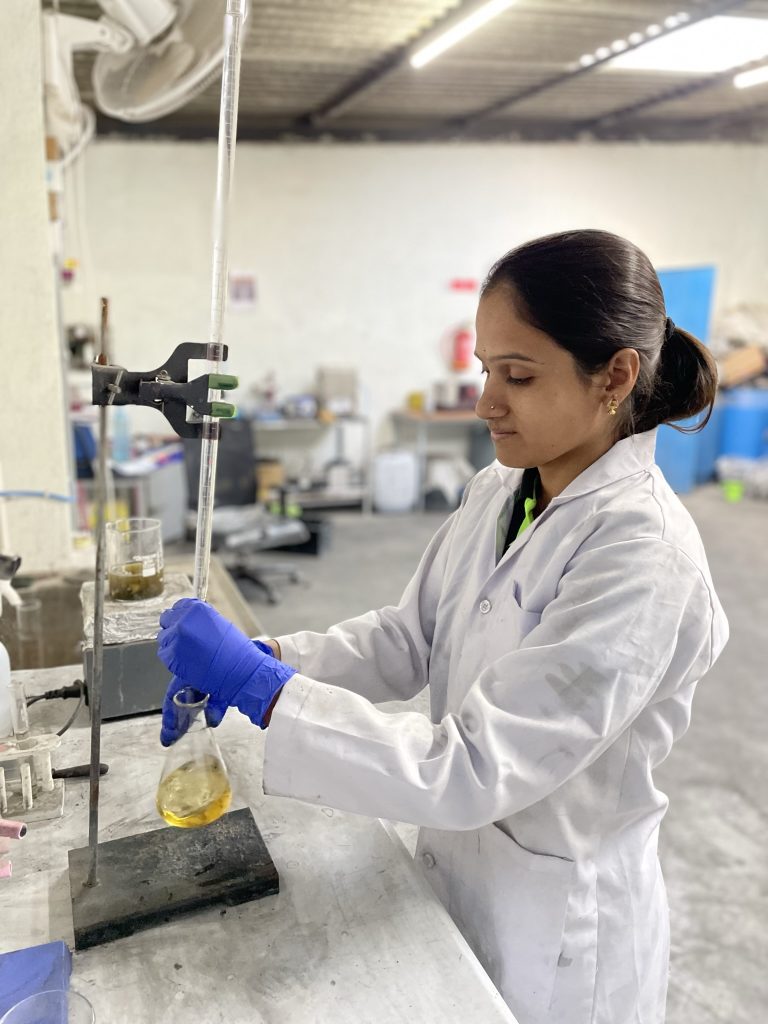Black mass is an intermediate product in the form of amorphous powder, derived from the mechanical processing of spent lithium-ion batteries. It is both a challenge and a substantial opportunity in the realm of battery recycling. The material contains all the cathode metals, including lithium, cobalt, nickel, and manganese and is used as a raw material for manufacturing battery cathode material, but needs to be refined to exact specifications to meet the battery grade requirements. The recycling industry, like the lithium battery industry, is burgeoning and still evolving. The most commonly used technology for battery recycling is hydrometallurgy, which was adopted from lead-acid battery recycling. Hydrometallurgy and any developing new technologies for the extraction and recycling of lithium-ion batteries face a complex issue when it comes to critical metals and their extraction from black mass. From pre-processing to final purification, every engineering decision directly impacts the recovery rate, which in turn determines the economics and environmental footprint of the recycling operation.
Pre-Processing and its foundational role
The journey of an end-of-life battery to raw materials begins with precise pre-processing. Sorting chemistry-wise to ensure feedstock uniformity is first. It may seem rudimentary, but the initial shredding and crushing of battery cells are critical as this can directly impact the particle size of the copper, aluminium and black mass, and thus impact subsequent steps of product quality of copper, aluminium or steel.
After crushing, like mechanical separation steps, homogenization is done as black mass from different sources can have varying compositions and particle sizes, thus making it an inherently heterogeneous material. Homogenised black mass allows for a more predictable recycling process. During homogenization of the crushed material, the blade or rotor design, depending on the equipment being used, is very crucial. The solid-to-liquid ratio, RPM of the rotor and the fluid dynamics of the slurry have to be optimised very precisely. If the materials are too fine, the black mass may mix as a contamination in the metals extracted during pre-processing, lowering product purity. Filteration is another step before the main treatment of extraction. For filtration, one has to be mindful of pressure, pore size and the moisture content. Homogenisation and filtration impact the downstream processes and ultimate yield; hence, getting it right is essential. If these pre-processing steps are not optimised via engineering, it can lead to increased processing costs due to requiring additional processing. Shredding parameters have to be optimised for various feedstock types, and real-time checking of incoming material allows for adjustments to equipment settings. The initial control lays the foundation for ideal downstream recovery.
Recycling Methodologies: Limits, Innovations
Existing battery recycling methods like pyrometallurgy, hydrometallurgy, and direct recycling possess inherent advantages as well as limitations. Pyrometallurgy can handle various battery types, but consumes high amounts of energy as temperatures can reach up to 1600 degrees celsius and loses vital elements like lithium, aluminium as slag. Hydrometallurgy can be precise, but it is highly reagent-intensive and generates high amounts of wastewater. Direct recycling promises to restore the depleted cathode to its original state without any breaking down into individual metals, but it struggles to maintain consistency and scalability while demanding completely homogenous feedstock.
We are currently witnessing a new wave of engineering innovation in recycling technology, moving beyond the conventional paradigms. Start-ups are building physical and physicochemical technologies for separation that leverage differences in material properties for separation for recovery of components more precisely. These technologies avoid the brute force approach of chemical dissolution or high temperature.
Custom-designed units can now isolate and extract specific components, using nuanced engineering choices such as magnetic susceptibility, density gradients, or selective wettability. Cross-contamination is reduced, and cathode active material is preserved at higher concentrations, reducing loss before chemical recovery.
Selective Physio-Chemical Processing, Process Control and Purity
Following initial physical separations, the process transitions to novel physio-chemical techniques. Operating at controlled temperatures and pressures to isolate specific compounds is done. The goal is to separate and purify valuable materials from their binders without completely dissolving a certain element in the process and preserving the intrinsic value of recovered components.
For high recovery rates and purity, sophisticated process control is a must. Advanced facilities have comprehensive automation platforms, monitoring and controlling every step from material feeding to product discharge in real-time. In-line sensors provide instantaneous feedback on material composition, reaction progress, and separation efficiency. Dynamic adjustments can be made to process parameters, such as temperature, pressure, flow rate, pH and TDS. These engineering decisions don’t just make the process cleaner; they directly influence yield and commercial viability. Higher yield means more valuable metals per tonne of input. Higher purity or refining abilities enable direct sale into cathode precursor markets or internal reuse. Lower cost arises from reduced waste, fewer purification cycles, and better reagent efficiency.
Purity of recovered materials is a direct consequence of these selective engineering choices. By avoiding broad dissolution, the waste is reduced. Subsequent targeted purification modules, specific to each recovered metal, are then employed. These modules can be custom-engineered to remove specific trace contaminants that could compromise battery performance. For instance, achieving ultra-low levels of iron or copper is critical for producing battery-grade materials, necessitating highly specialised separation media and operating conditions. Black mass after pre-processing of batteries is not directly reusable in battery manufacturing. To be transformed into battery-grade cathode materials, black mass must first meet critical specifications, especially for purity where metal recovery must meet or exceed industry thresholds (e.g., >99.5% Li content), with minimal cross-contamination (e.g., Fe, Cu, Al below ppm levels).

Sustainable Engineering: Resource Efficiency and Environmental Impact
Beyond technical performance, engineering decisions profoundly influence resource efficiency and environmental impact. Robust mechanical designs are critical for operational uptime and long-term sustainability and need to feature advanced materials for resistance to wear and chemical environments. Modularity in design facilitates maintenance and scalability. Energy efficiency is a priority in every design aspect, from optimised pumping systems to comprehensive heat recovery units.
Furthermore, these innovations aim to significantly reduce chemical consumption and wastewater generation compared to traditional methods. Reagents, if used at all are either recycled in closed loops or are chosen for their benign nature and ease of neutralisation. Prioritising solid-state separations minimises the reliance on aqueous solutions. This commitment to sustainability is not merely regulatory compliance; it is a fundamental design principle that drives both environmental responsibility and economic competitiveness.
The integration of meticulous engineering choices across every stage of the recycling process, from initial deconstruction to final purification, is paramount for achieving high recovery rates in battery material recycling. It is through this precision in handling the black mass that the full potential of urban mining can be realised, paving the way for a truly circular economy for lithium-ion batteries.
Why Engineering & Sustained R&D is so Important
In the evolving lithium battery industry and directional, sustained R&D as well as highly skilled technical know-how are strategic necessities. Startups in the space cannot afford to rely on outsourced technology only, but need to think outside of the box. To be competitive and defensible, the recycler should own its process know-how and IP, and that comes from deep engineering expertise. With precision engineering, startups can build differentiation in a crowded market of commoditised recyclers, retain margin by improving recovery rates, meet compliance and ESG requirements, and are better positioned to partner with OEMs who demand consistency and battery-grade purity.
Sustained R&D helps companies iterate, refine and evolve processes for long term. It is most important that the company is aware of and aligned with future chemistry trends. As new battery chemistry enters the market, those with robust R&D pipelines will adapt quickly, and startups with their process insights can generate licensable IP and offer defensible advantages in new markets.
Conclusion: Strategising Black Mass
Black Mass is not a waste product to be handled; it is a strategic resource for energy independence, reducing reliance on virgin mining and driving circularity in the battery chain. But to unlock its real value, recyclers must treat every engineering choice with precision. Startups that invest in technology to optimise will recycle better and truly add value that shapes the future of how critical materials are recovered, reused and reintroduced into the supply chain. Precision engineering in black mass processing is central to building a responsible, scalable battery recycling ecosystem.
About Author: Arvin M, Head of Industrial Design at Metastable Materials



